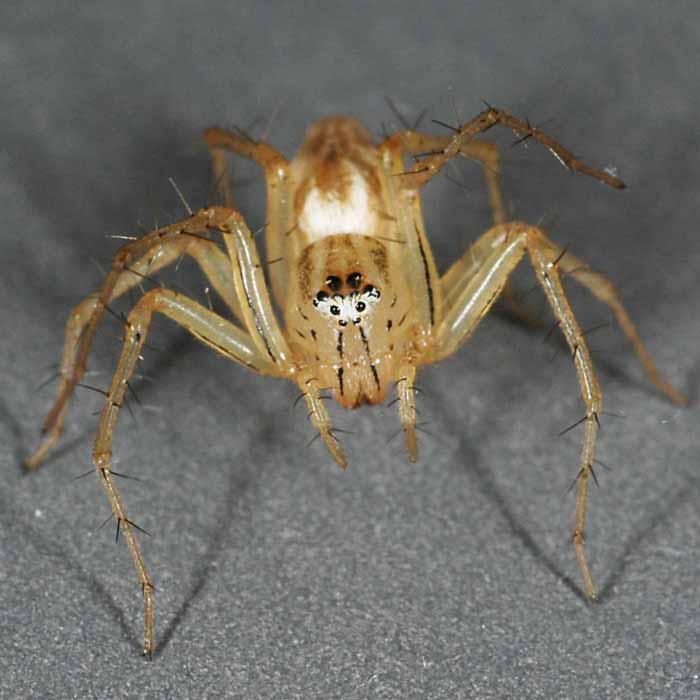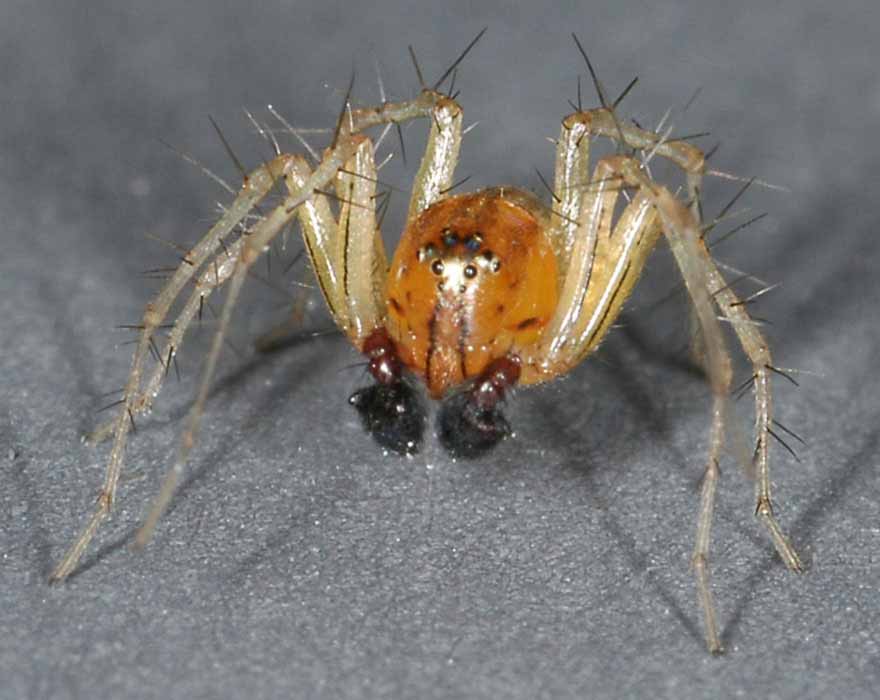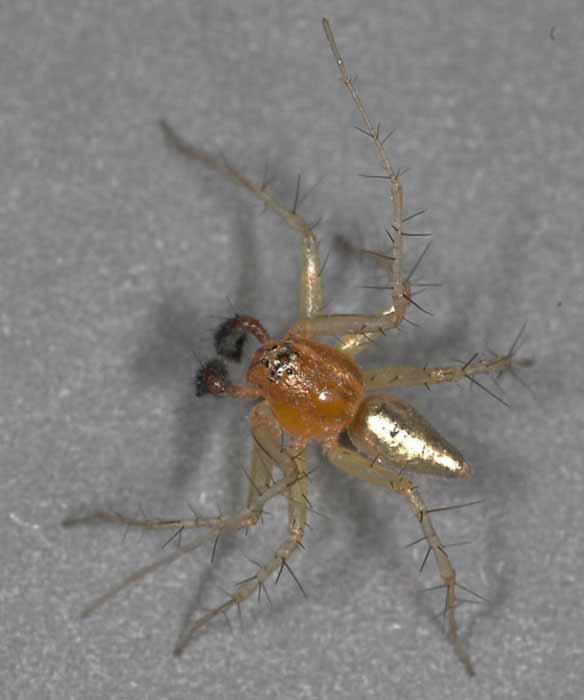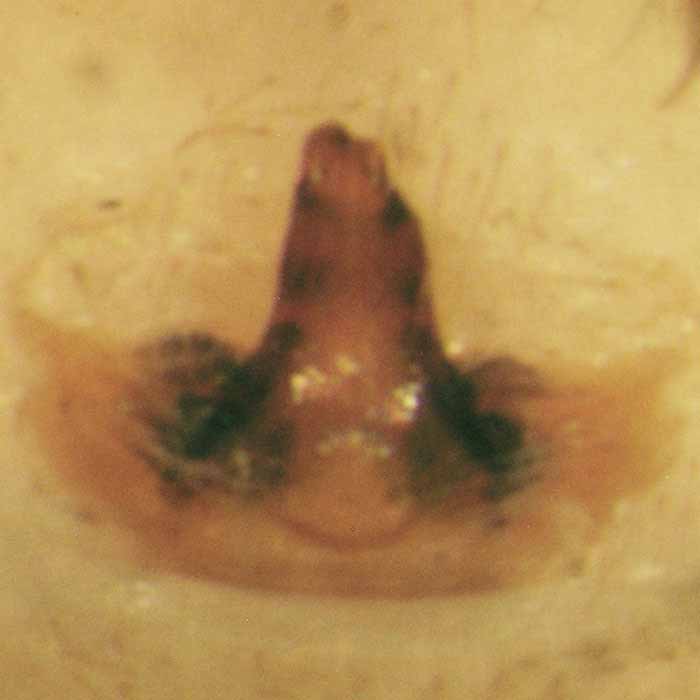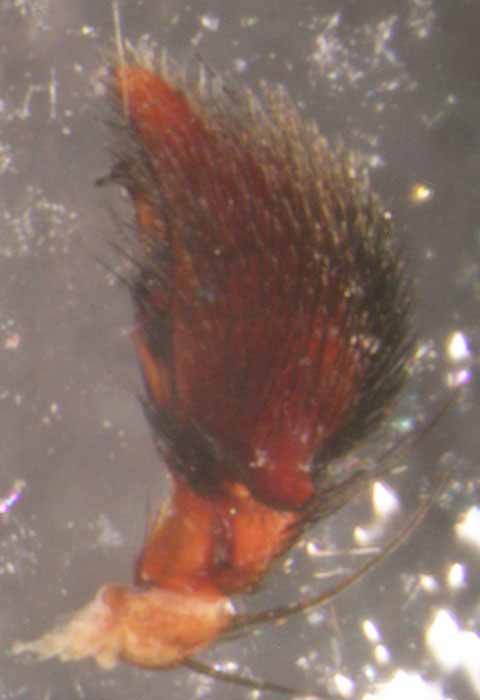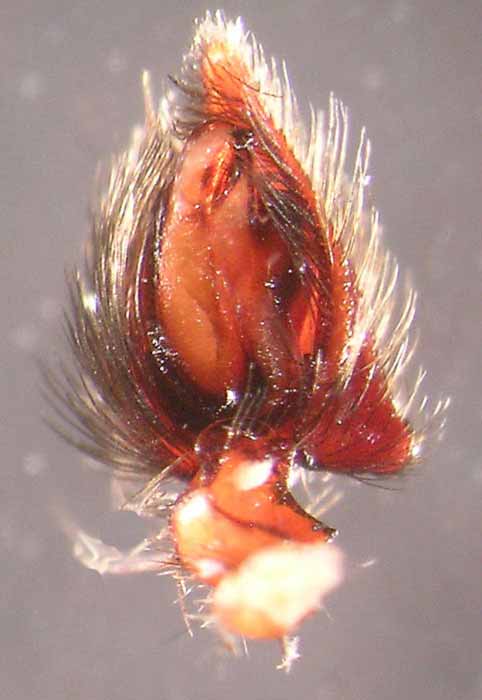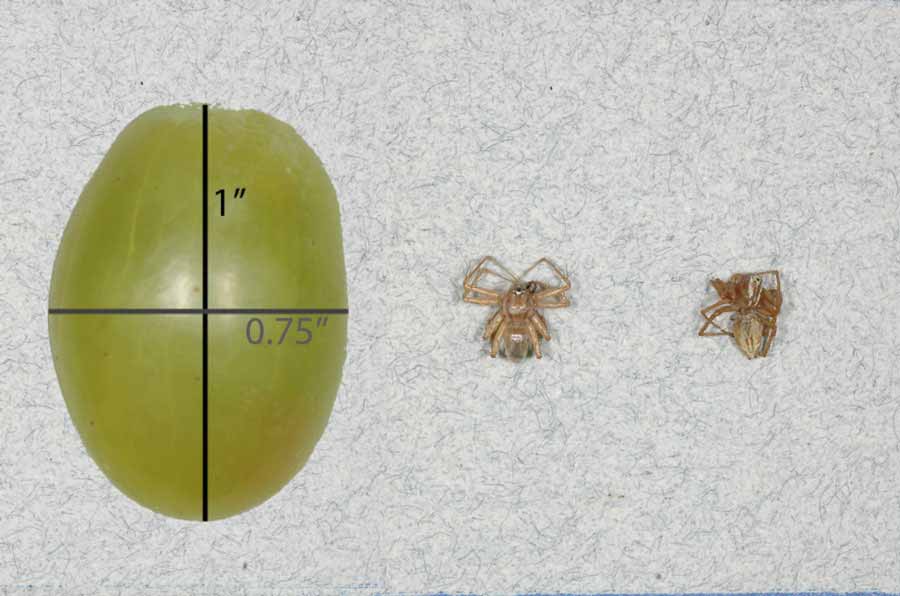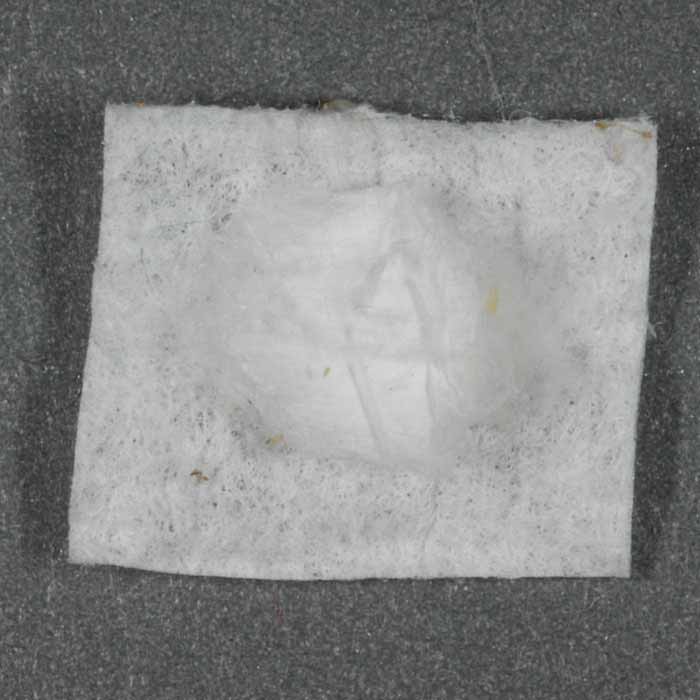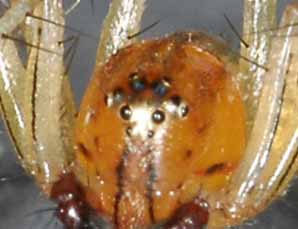Oxyopes salticus
|
adult female, live; face view |
|
adult female, live; dorsal view |
|
adult male, live; face view |
|
adult male, live; dorsal view |
|
female genitalia; epigynum |
|
male genitalia; palp, lateral view |
|
male genitalia; palp, ventral view |
|
grape size comparison with adult spiders; male (left), female (right) |
|
egg sac |
|
egg sac with scale (cm) |
|
diagnostic feature; hexagonal eye pattern |
Current valid name
Oxyopes salticus Hentz (family Oxyopidae)
Recognition and diagnostic features
Six of its eyes in hexagon pattern on top of the cephalic region with remaining 2 smaller eyes anterior. Many leg spines perpendicular to leg. Body coloration should be sufficient for identification. Might be confused with Oxyopes scalaris, might be confused with jumping spiders because of compact body form and relatively short legs, might be confused with Mimetus hesperus due to large number of leg spines.
Related or similar species
Oxyopes scalaris, jumping spiders, Mimetus hesperus
Spider
Body lengths when mature: male: 4.7 mm (range 3.9 - 5.9), female: 5.9 mm (range 4.6 - 7.4)
Immatures resemble miniature adults.
Egg sac
Description: fastened to several pieces of foliage with silk lines
Number of eggs per sac: two egg sacs reported in Brady (1964) with 19 and 55 progeny
Distribution
In California: throughout state, more coastal than inland
Elsewhere: eastern half of United States except northernmost Midwest
Native to North America
This species has been transported and become established outside of its range.
Biology
Active diurnal hunter. Rarely found in grape bunches nor does it hide in them. Found more frequently on ground vegetation than the vines. Less common than O. scalaris.
Status in table grapes
Level of Incidence: moderately common
Level of Concern in New Zealand: WPNZ (May 2010) nr, BORIC (Dec 2011) nr (not listed), MAF-BPRA (2002) nr (coding definition)
Level of Concern in Australia: WPAU (2006) nr (coding definition)
Level of Medical importance: none
Common name
Striped lynx spider for species, lynx spiders for family
Taxonomic history
Stable
Selected references
Brady, A. R. 1964. The lynx spiders of North America, north of Mexico (Araneae: Oxyopidae). Bull. Mus. Comp. Zool. 131: 431-518.

